The arrival of a replica 15th century Portuguese caravel in our little port stirred memories of earlier readings about the first Europeans to visit Australia, so I thought it worth passing a wet and windy winter's day by preparing this article.
Officially, the Dutch ship Duyfken was the first arrival of Europeans, reaching the western side of Cape York in 1606. It had come from the Dutch East Indies Company base at Batavia in Java, and was followed by other Dutch ships in the 1600s. But the Dutch were relative newcomers to the region: the Portuguese had almost a century's start on them.
The Portuguese explorer Vasco da Gama reached India in 1498, leading to the spice trade, the driving force for European exploration. The Portuguese then proceeded to set up a chain of trading ports from Goa in India, to Malaysia, China and as far as Nagasaki in Japan. One, near Australia in Timor, remained in Portuguese hands for some 450 years until the late 20th century. So, given the adventurous nature of these sailors and their endless quest for new riches, it seems barely credible that they did not also explore the nearby coasts of Australia. Yet because there is no “official record”, academic historians discount the suggestion of Portuguese exploration of Australia. The problem, of course, is that if a ship sails uneventfully along a coast, it leaves little to show its progress....
In 1522, the Portuguese explorer Cristóvão de Mendonça went on a voyage from the fort at Malacca with three (some sources say four) caravels, seeking Marco Polo's “Island of Gold” to the south of Java. Eighteen months later, two returned. But there are no known records of where he went, or what he found or reported. The Portuguese were very secretive about their travels and kept all records under tight security in their records office in Lisbon. Unfortunately, in 1755, a major earthquake and tsunami destroyed much of Lisbon, including the records office and its contents.
There are tantalising hints in Australia of early visitors. On Stradbroke Island near Brisbane, a mystery shipwreck of a “galleon” was recorded in the 1800s and last seen in 1934 when it had been vandalised for metals and largely destroyed by bush fires. Equally as well recorded was another mystery wreck of an ancient “Mahogany Ship” on the Victorian coast, found in the early 1800s and seen by many people, but now also missing, believed destroyed.
Then there are such pieces of evidence as the “Vallard” and ”Dieppe” maps, produced by French cartographers in the mid-1500s and believed to have been copied from stolen Portuguese and Spanish maps (the French had an excellent espionage network in those times). Although the maps may look unusual, when a little interpretation is done they do indeed resemble the coastline of eastern Australia, with several features being identifiable. On this subject, I would recommend spending a few minutes watching this youtube video: www.youtube.com/watch?v=TSPGgesQ8h8
Finally, as circumstantial evidence, we can look at the travels of known explorers. In 1606 Luis Váez de Torres with two Spanish ships came across the Pacific, tracked along the south coast of New Guinea and, like homing pigeons, travelled directly through the strait at the north of Australia that now bears his name: four months after the voyage of the Duyfken. It is generally accepted that information on Torres' voyage through the Strait was available to Captain Cook in the Endeavour in 1770.
What is more surprising is that, when Cook's ship was badly damaged by hitting a reef on its voyage north along the Australian coast, Cook did not return to any part of the coast he had passed. Instead, he pushed directly onwards to the supposedly “unknown” Endeavour River, where he proceeded to repair his ship! It is hard to imagine he would have done this without some prior knowledge that such a refuge existed: given that his ship was sinking, returning to any “known” place would have seemed more rational. Was he privy to existing Portuguese maps? (He had previously chosen to land at Botany Bay, which appears to be identified on the “Dieppe” map).
So, is there proof positive that the Portuguese first explored the eastern coast of Australia? No, but I rather believe an impartial jury would have to conclude that it is not at all beyond reasonable doubt. Should you be interested in reading more, I would recommend spending a few minutes looking at this web page which gives details of the "Stradbroke Island Galleon" tinyurl.com/mujcc3bw .
One thing is certain however. The replica Portuguese caravel ”Notorious” that sailed into view of my camera is very real indeed, and I am happy to share the following photos with you (several are to be found in my photo stream on Ipernity).
Finally, I must record my appreciation to Graeme and Felicite, the proud owners of the Caravel, who undertook a massive labour of love to design and build it over a ten year period, and who were very generous with their assistance. Their portraits are in my main photo stream.
My Ipernity friend Janet Brien has researched the internet about the "Notorious" and recommends the following links, for those wishing more detail on the ship:
en.wikipedia.org/wiki/Notorious_(ship)
www.naroomanewsonline.com.au/story/1623860/historic-replica-caravel-notorious-at-bermagui . (Unfortunately, this page is no longer accessible).
If anyone wishes to do more reading about the probable Portuguese exploration of Australia, I would highly recommend the book "Beyond Capricorn" by Peter Trickett: even though the "official historians" downplay his work. Personally, I find it entirely credible.
[UPDATE - Links checked and updated 3/7/2022]
Notorious departing from Batemans Bay, very probably the first time such a ship has travelled this coast in about 500 years!
My Ipernity friend Janet Brien has researched the internet about the "Notorious" and recommends the following links, for those wishing more detail on the ship:
en.wikipedia.org/wiki/Notorious_(ship)
www.naroomanewsonline.com.au/story/1623860/historic-replica-caravel-notorious-at-bermagui . (Unfortunately, this page is no longer accessible).
If anyone wishes to do more reading about the probable Portuguese exploration of Australia, I would highly recommend the book "Beyond Capricorn" by Peter Trickett: even though the "official historians" downplay his work. Personally, I find it entirely credible.
[UPDATE - Links checked and updated 3/7/2022]



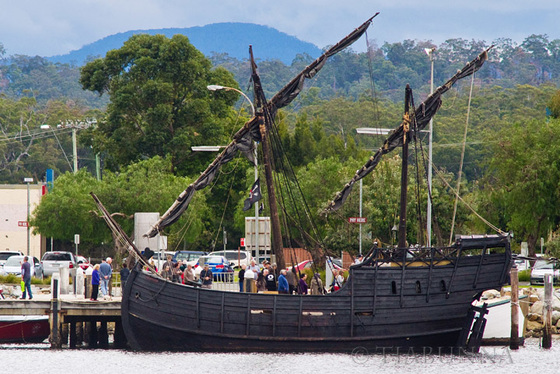

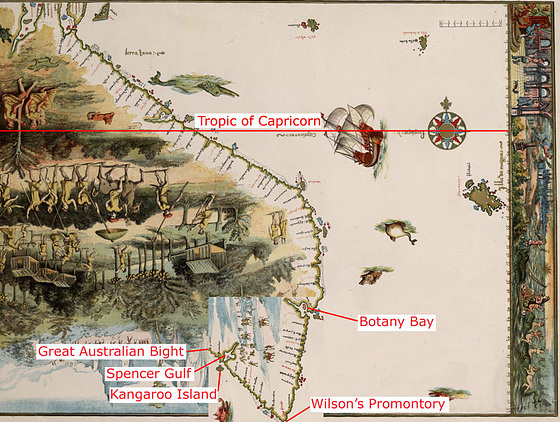
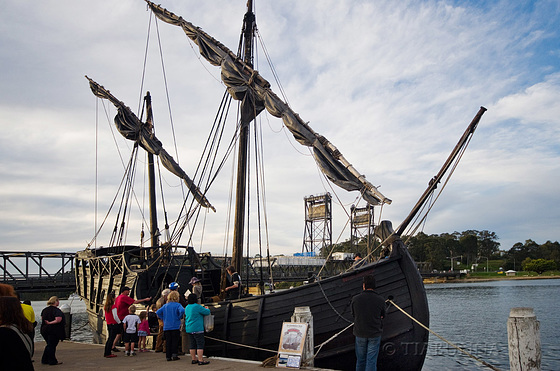

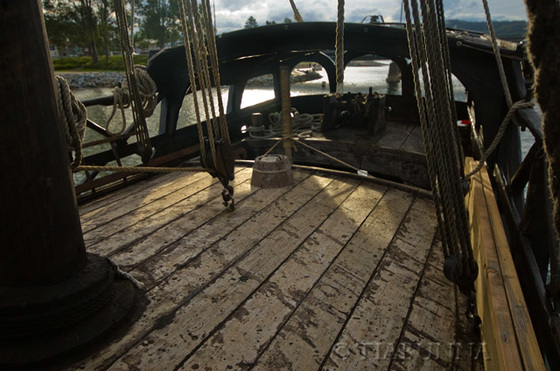

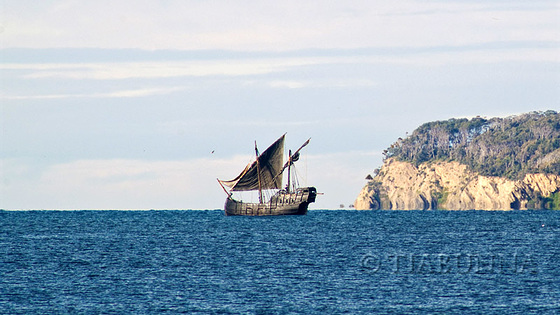
The Story Behind the Man who Mapped the World
By: Peter FitzSimons, published late last year.
The discovery of Australia and the efforts to find evidence is an exciting story.
To me, it's remarkable that the replica of the Notorious was accomplished
without cutting down a tree for it.
Sign-in to write a comment.